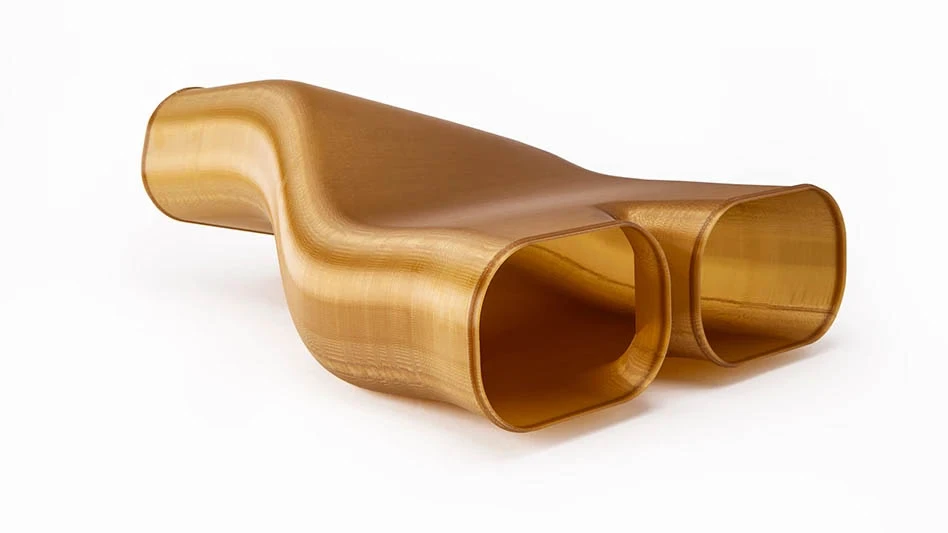
The need to improve part accuracy is driven by cost. Accurate parts reduce the time and the cost of inspection, scrap, assembly, and warranty costs of finished products. Generally, a machine tool that is routinely calibrated for accuracy can produce parts faster. Furthermore, an accurate part can improve overall product performance, which can lead to higher sales volumes and market share. Typically, greater economy of scale results in lower costs. For determining accuracy, such methods as inspecting parts after machining and machine tool calibration, and compensation of dynamic, linear, and 3D (volumetric) positioning errors are used.
Ten to 20 years ago, linear tolerances were the most important accuracy measurement, but today most machine tools can hold very tight linear tolerances. The next greatest errors are dynamic (servo) errors and squareness and straightness errors – static 3D (volumetric) errors.
The one true test of machine tool accuracy is whether or not it can hold dimensional tolerances. Dynamic servo errors are akin to racing a car: too fast through the curve and it overshoots; too slow and you waste time and may undershoot. It's the same with a machine tool: how fast can the tool move without undershooting, overshooting or crashing? Overshooting a corner creates a distortion or an anode on the edge of a corner. Undershooting causes distortion, and abrupt feedrate changes affect cornering and contouring accuracy.
The importance of addressing 3D errors has grown greatly as the complexity of parts and the number of parts designed with 3D CAD software increases. For example, the accuracy of contact points between two or more parts is essential if parts are to assemble or perform as expected.
The traditional laser calibration techniques for measuring 3D accuracy, i.e. a Wollensten prism and a special target and straight-line laser with quad detector are impractical. The Wollensten prism is very difficult to set up and align. The straight line laser beam with a quad-detector is affected by air circulation and temperature gradients when measuring the center of the beam. Both methods are time consuming, requiring several days to calibrate a machine tool.
The Sequential Step Diagonal Method, patented by Optodyne, can measure 3D accuracy in hours instead of days. The method, using a Laser Doppler Displacement Meter measures three displacement errors, six straightness errors, and three squareness errors with only four setups. Since the laser beam does not have to be in a perfect straight line, air circulation and temperature gradient have very little effect.
Volumetric Error Components
For years, the Body Diagonal Displacement Method for measuring 3D accuracy of a machine tool with a laser interferometer calibration system as defined by ASME B5.54 and ISO 230-6 has provided a quick check of volumetric error with good results. The cost and lost production time are minimized since the measurements are relatively simple and quick to make.
Body diagonal displacement errors are sensitive to all the volumetric error components and therefore make an efficient test of volumetric accuracy. A diagonal is defined by starting at one corner of the base plane and moving to the opposite corner at the top plane. The positive or negative axis movement defines the body diagonals. The last four body diagonals are the same corners as the first four diagonals, except the directions are reversed. There are only four body diagonal directions with forward movement and reverse movement and only four setups. Position coordinates are captured after each simultaneous X, Y, and Z move.
Since there are only four sets of data and nine sets of errors, the body diagonal displacement method does not generate enough information to determine the source of errors. This led to the development of the Sequential Step Diagonal Method.
Volumetric Positioning Errors
The 3D volumetric positioning errors include three linear displacement errors, six straightness errors and three squareness errors. While a conventional interferometer can take several days to measure 3D errors, the sequential step diagonal method allows measurement of 3D errors in as little as a few hours, depending on the size of the machine tool.
The relationship between machine temperature distribution and 3D positioning errors can be measured and modeled by combining the data obtained with the Sequential Step Diagonal Method with data from a set of thermocouples placed at key locations on the machine tool structure. The measured errors can be used to generate a compensation table for 3D positioning errors under a range of thermal conditions. The operator can upload the compensation table appropriate for the current ambient temperature.
For a 3-axis machine, there are six errors per axis or a total of 18 errors plus three squareness errors. These 21 rigid body errors can be expressed as follows:
- Linear displacement errors:
Dx(x), Dy(y), and Dz(z) - Vertical straightness errors:
Dy(x), Dx(y), and Dx(z) - Horizontal straightness errors:
Dz(x), Dz(y), and Dy(z) - Roll angular errors:
Ax(x), Ay(y), and Az(z) - Pitch angular errors:
Ay(x),Ax(y), and Ax(z) - Yaw angular errors:
Az(x), Az(y), and Ay(z) - Squareness errors:
Øxy, Øyz, Øzx
Note: D is the linear error; subscript is the error direction; position coordinate is in parenthesis (X), (Y), or (Z); A is the angular error; subscript is axis of rotation.
The angular errors are pitch, yaw, and roll errors. For most machines, the angular errors multiplied by the Abbe offset becomes linear displacement errors or straightness errors. An Abbe offset is the change in distance between the closest and furthest points of the retroreflector during measurement when the machine appears to have an angular movement. For most CNC machine tools, the Abbe offsets are small and that's why the angular errors can be ignored. On CMM's.
The sum of all errors in each axis direction can be expressed as:
- Dx(x,y,z) = Dx(x) + Dx(y) + Dx(z)
- Dy(x,y,z) = Dy(x) + Dy(y) +
Dy(z) + Øxy*x/X - Dz(x,y,z) = Dz(x) + Dz(y) +
Dz(z) + Øyz*y/Y + Øzx*x/X
Today, tolerances have become so demanding that thermal growth and its effect on machine tool accuracy must be considered. The continuously increasing power output of the machine spindles and the rising dynamics of driven movements have a direct influence on the machine thermal state. During machining operations spindles, ballscrews and ways/guide systems create thermal loads resulting in growth of positioning components. To machine accurate parts, thermal growth must be measured and compensated.
Measuring Errors
With the Sequential Step Diagonal Method, the laser beam direction (measurement direction) is not parallel to the linear axes. As a result, the measured displacement errors are sensitive to the errors parallel and perpendicular to the direction of the axis. One could say the measured linear errors are the vector sum of errors, for example, the displacement errors (parallel to the linear axis), the vertical straightness errors (perpendicular to the linear axis), and horizontal straightness errors (perpendicular to the linear axis and vertical straightness error direction), projected to the direction of the laser beam.
By collecting data with the laser beam pointing in four body diagonal directions, all 12-types of errors are identified. Since the errors of each axis of motion are vectors with three perpendicular error components, this measurement is considered a vector measurement technique.
A conventional body diagonal measurement, along all three axes, moves simultaneously along a body diagonal and collects data at each preset increment. The sequential step diagonal measurement method differs from the body diagonal displacement measurement by moving each axis separately and in sequence; and after each separate movement of the X-axis, Y-axis and then Z-axis collecting the diagonal positioning error. Therefore, three times the data is collected, and the error of each axis movement is collected separately.
The conventional linear displacement technique measures only along one edge and fails to consider pitch, yaw and angular errors. The sequential step technique measures along all four edges. The measurements are averaged and the result is displacement error through the center of the volume, which is inherently more accurate.
For example, pitch, yaw, and roll angular errors affect all of the measurements, including the linear displacement measured by a conventional laser interferometer. Therefore, the linear displacement errors measured along the X-axis will be different when measured at different Y-locations and Z-locations. This is because of different Abbe offsets at different locations and the pitch, yaw, and roll angular motions. For this reason, the B5.54 standard states all linear displacement measurements must be along three orthogonal lines, i.e. parallel to the three axes, passing through the center of the working volume.
The angular errors are measured and expressed as the averaged straightness errors along the centerlines of the working volume with the sequential step diagonal measurement method. Most machine tools cannot compensate for angular errors and when angular errors can't be compensated, the accepted work-around is to compensate for the averaged straightness errors. Note that the displacement errors and straightness errors measured along one edge of the working volume will differ from those measured along another edge due to the Abbe offset and angular errors. The Sequential Step Diagonal Method measures and averages over the four edges.
Compensating Errors
With volumetric error measurements, software can generate a compensation table automatically, which can be uploaded to the control with a minimum potential for error. The table compensates for the machine tool's whole volume, improving overall accuracy of the machine tool. With software for automatically generating compensation files for CNC controls, time-consuming and error-prone manual calculations can be eliminated.
Clicking on the comp button on Optodyne metrology software launches the compensation table functionality. The operator sets the onscreen parameters, including in./mm, comp increment, forward/reverse, increment/absolute, and starting address. Up to 18 compensation parameters are calculated and tabulated, which include three linear errors, six straightness errors, and three squareness errors. Using the control's software and communications software, the compensation table may be uploaded, which will compensate for the machine tool's entire volume, improving overall accuracy of the machine tool.
For some low-end controllers, only the lead screw pitch error can be compensated. With such controllers, it is possible to compensate the 3D positioning errors by compensating the part program. Many metrology software programs are available to volumetrically compensate part programs, for example, ShadowMap software.
To use this software, the 3D volumetric positioning errors of the machine must be measured. Based on the measured positioning errors, a 3D position error map can be generated and downloaded to the software. It reads the part program and corrects commanded positions based on the error map and outputs a corrected part program. An example of parts program before correction and after correction is shown below.
Conclusion
The time is fast approaching when linear accuracy is not enough. Buyers of machine tools will purchase machines not based on linear accuracy alone, but on 3D volumetric accuracy. Already, leading machine tool builders such as Mitsui Seiki and Yasda, have published 3D volumetric accuracy of their machine tools and are enjoying a dramatic increase in sales.
A laser calibration system capable of 3D volumetric calibration will allow machines to be calibrated according to the shop schedule, reducing nonproductive time. By generating 3D compensation tables and a range of thermal comp tables, machine tools should be able to improve accuracy and increase throughput; in most cases this can be done in less than a day.

Explore the November 2007 Issue
Check out more from this issue and find your next story to read.
Latest from Aerospace Manufacturing and Design
- NASA selects instruments for Artemis lunar terrain vehicle
- Twin-cutter boring head
- Bell awarded funding for X-plane build phase of SPRINT program
- Shaft coupling clamps
- #46 Lunch + Learn Podcast with SMW Autoblok
- Gleason Corp. acquires the Intra Group of Companies
- Thread milling cutter reduces cutting pressure, vibration
- Malaysia Aviation Group orders 20 more Airbus A330neo widebodies





